By: Susan Sprout
Galls
The goldenrod stem has a lump.
-Unknown
The willow twig sprouted a bump.
Some rumor a tumor
But I think I’d sooner
Believe it some kind of a mump!
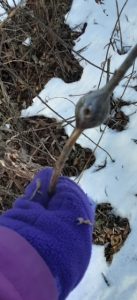
I cannot take credit for this poem. I used it years ago while teaching and have since lost the book source and poet’s name. I will credit the poet when I find a name. But, WOW! How perfect is it as an introduction to galls? This is a great time of year to be looking for these abnormal plant growths on twigs and branches that have lost their leaves. They really stick out!
Most galls are caused by insects like aphids, midges, wasps, or mites. They eat or lay eggs which causes irritation that stimulates plant cells to reorganize and accelerate their growth in bizarre ways. Viruses, fungi and bacteria can also invade plants and trees to create galls. Galls can act as protective habitat from predators as well as a food source for larvae.
There are over 2,000 American plant galls caused by insects and mites! You can sometimes identify the insect or mite responsible by identifying the plant and where on the plant it has been invaded.
The willow pinecone gall grows at the tips of branches and is caused by gall gnat larvae. The swollen ball gall is caused by a goldenrod gall fly and is found on the stem. The following spring or summer, a small hole in the gall will be evidence that the larva has matured and gone its own way…to another lovely green goldenrod stem.
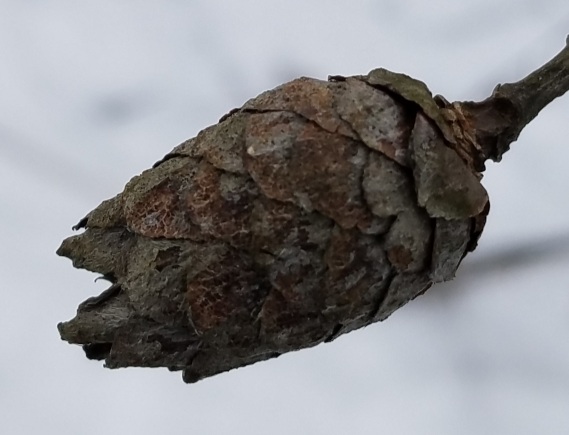
The bushy cabbage gall on goldenrod growth tips stop growth in that direction, causing the leaves to fluff out and send stems growing outward under it.
A bonus while I searched for galls was a preying mantis egg case, resembling beige expansion foam, like the kind used for filling cracks and insulating. Bet it works great for the mantis babies!
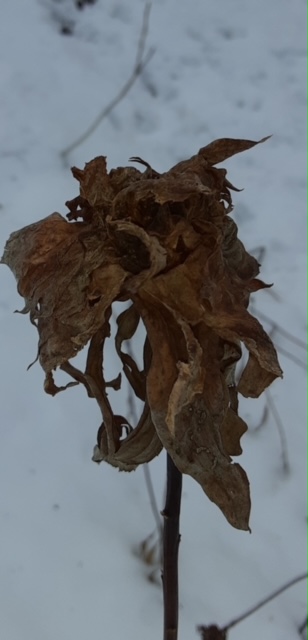
Bushy cabbage goldenrod gall 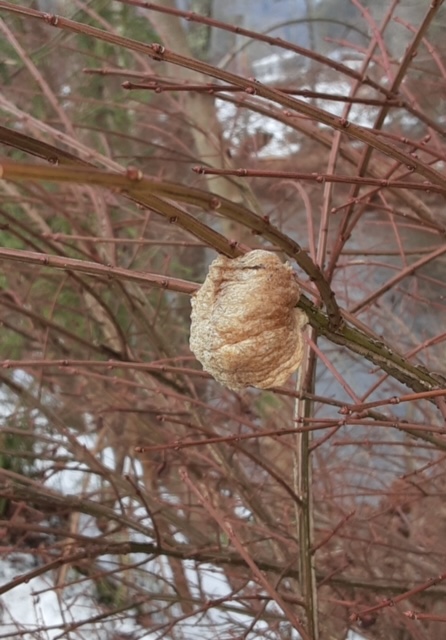
Preying mantis egg case
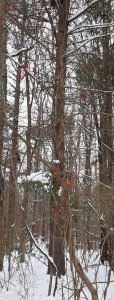
Bittersweet
It’s a vine that’s not divine! A bittersweet tale on my part because I unknowingly became an accessory to the spread of this prolific and invasive plant. By using large sprays of its berries for fall and winter decorations, I have helped the spread of its seeds…just like birds, in whose stomachs the seeds can remain for weeks allowing them to be deposited long distances away. No, I didn’t eat them because they are poisonous to humans. What I did do was to transport berries from where the Bittersweet was growing to my home, dropping seeds here and there and everywhere. I’m still uprooting little sprouts.
There are two species of Bittersweet in Pennsylvania, both members of the Staff-tree Family: one is native (Celastrus scandens)and in decline because of the other, a non-native (Celastrus orbiculatus) from Eastern Asia. They are difficult to differentiate: the native has skinnier leaves and puts out blooms and seed capsules terminally while the non-native one has rounder leaves and puts it blossoms and seed capsules near the leaf axils. Unfortunately, they can hybridize. Another reason they are hard to identify.
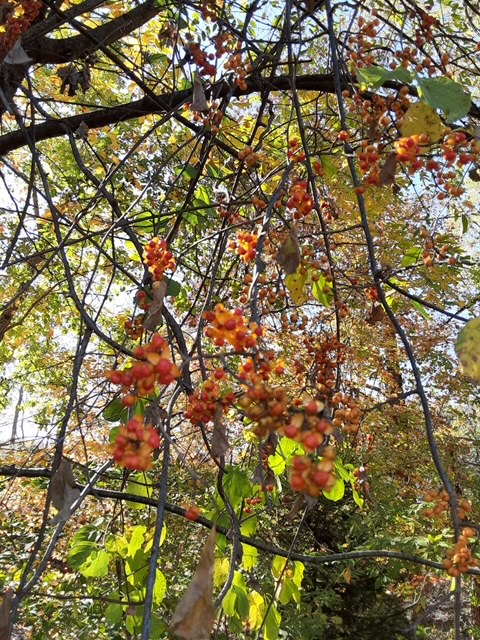
Golly, they look sooo pretty when the fruit capsules the size of peas split open, revealing the bright orangish-red fleshy aril that covers the seeds. That’s really sweet. But, the sad, bitter facts are that Bittersweet vines grow rapidly, climbing and twining up to ninety feet in taller trees. They have detrimental effects on any plant or tree they use for support because they can literally choke or girdle it, especially if it is young. The huge weight of these smothering vines can actually break down and uproot trees. Bittersweet, well-named.
Find out what’s underfoot with NPC member and environmental educator, Susan Sprout! Catch up on past issues of Underfoot: Introduction & Bloodroot, Trout Lily & Coltsfoot, Blue Cohosh & Dutchman’s Breeches, Ground Ivy & Forget-Me-Nots, Goldthread & Wild Ginger, Common Mullein & Sweet Woodruff, Aniseroot & Butterfly Weed, Myself , Jewelweed & Soapwort, American Pennyroyal & Great Lobelia, Boneset & Common Ragweed, Pokeweed & Blue Chicory, Prickly Cucumber & Wintergreen, Beech Drops & Partridge Berry, Pipsissewa & Nostoc, Witch Hazel, Plantsgiving, Black Jetbead & Decorating with Winterberry, Wild Bergamot & Bald Cypress Tree.

